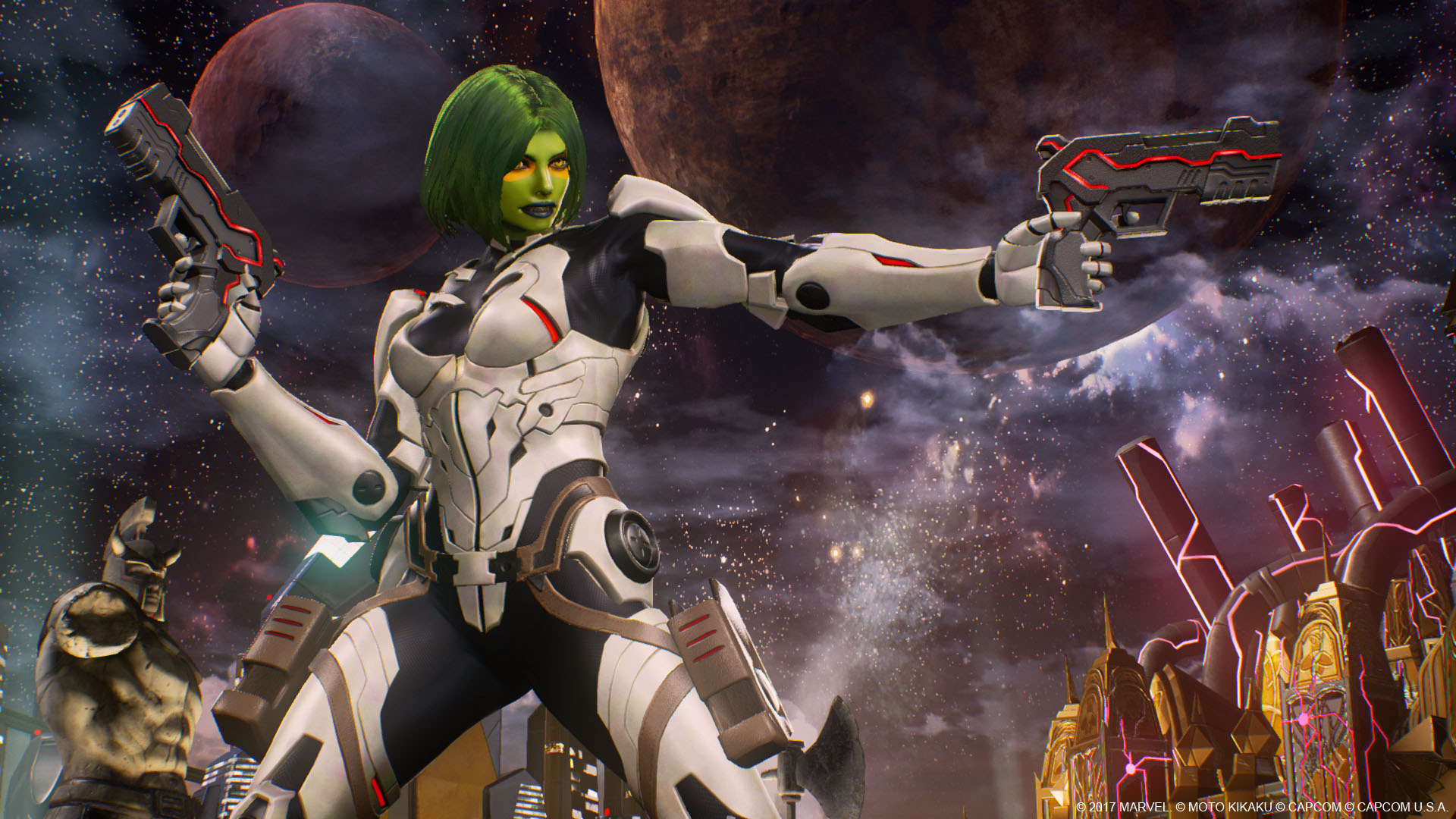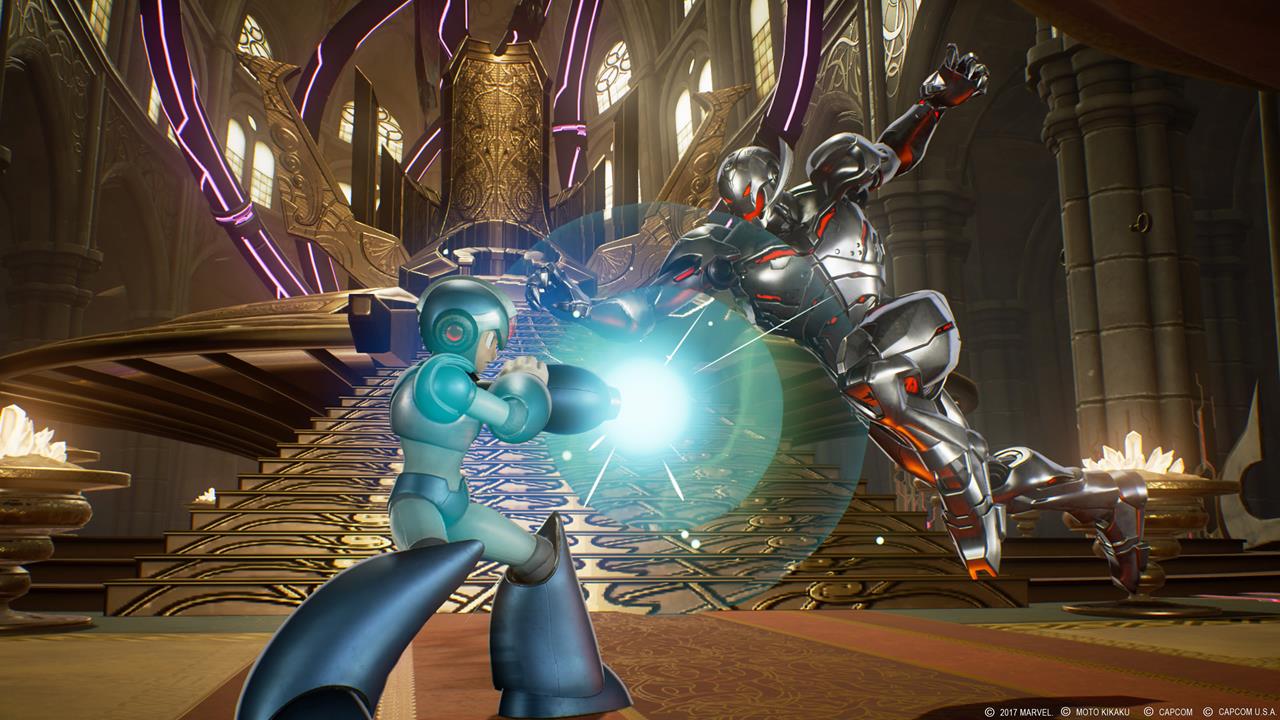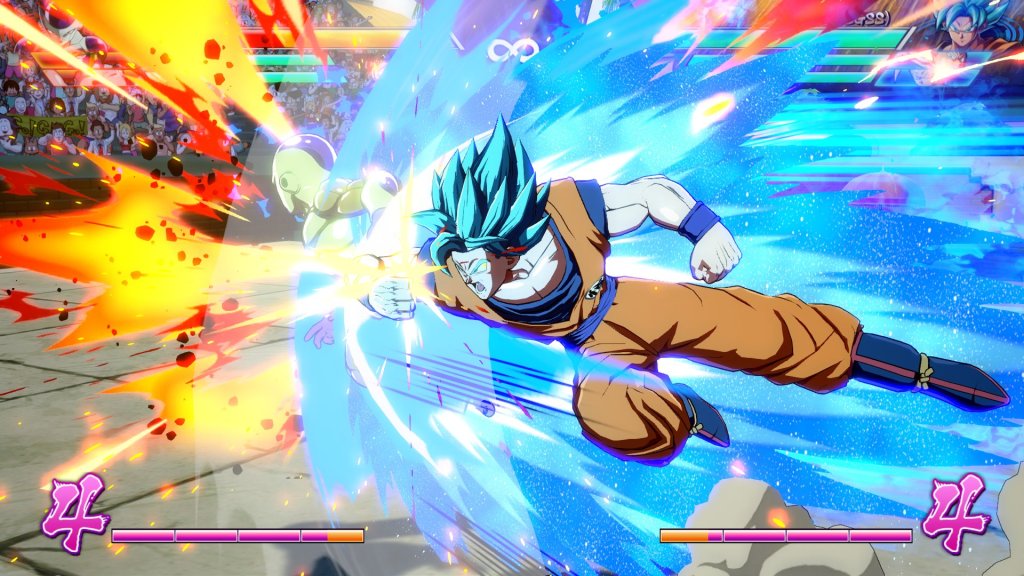Marvel vs. Capcom has always been a curiosity for me, mainly because there are characters on both sides of the fence that I’m a big fan of. I love Capcom characters, and I love Marvel’s star-studded cast. Of course, I thoroughly enjoy takin’ people for a ride in Marvel vs. Capcom 2, because who doesn’t? Marvel vs. Capcom 3: Fate of Two Worlds wasn’t quite at that level, but it was a good enough fighter to get lost in.
I’ve also had a torrid love affair with Dragon Ball Z since I was a little girl watching the Saiyan and Namek Saga over and over again as Cartoon Network refused to dub more. When it comes to video game adaptations, Dragon Ball has gotten the short end of the stick plenty of times, but the Budokai, Budokai Tenkaichi, Xenoverse series have done an admirable job adapting the franchise into a 3D fighter. However, good 2D DBZ fighters have been few in far between, at least in the United States, which is why Dragon Ball FighterZ caught my eye.
Read more: Marvel vs Capcom: Infinite is Here, But Did Capcom Learn Anything From Street Fighter V?
I’ve played the recently released Marvel vs. Capcom: Infinite and caught the closed beta of Dragon Ball FighterZ. After playing both, I’m shocked that Arc System Works is doing the MvC formula much better than Capcom is now. Dragon Ball FighterZ is basically A Dragon Ball-skinned version of Marvel vs. Capcom, except it’s a whole lot more enjoyable than Infinite is.

Dragon Ball FighterZ takes the MvC 2 or 3 formula of 1v1 tag team fighting with three warriors per team. You can switch out your fighters pretty much at will, and each of them has their own health bar. DBFZ has the same combo-intensive playstyle that previous MvC games did and feels natural for anyone who is a fan of the second or third game in the franchise.
Meanwhile, Marvel vs. Capcom: Infinite is a lot more subdued than its predecessors, in a bad way. You’ve been whittled down to only having two fighters at a time per player, and the action feels a lot less intense than in previous games. I get that Capcom wanted to make the series more accessible to newcomers, but in doing so, it lost a lot of its “oomph” that made it the go-to when you wanted infinite combos and crazy super attacks.
The biggest difference between the two games, besides the subject matter, is the graphics. Marvel vs. Capcom: Infinite looks like hot garbage. I have no idea what aesthetic Capcom was going for when they decided to use this style, but it looks like a PS2 cutscene. None of the characters or stages have any pop, and somehow all the Marvel and Capcom superstars end up looking like generic, dollar store toy renditions of themselves. It’s like a terrible mobile game developer made a fighter that featured “Mega Boy,” “0,” “Clark Bluefeld,” “Adversary” (the B.O.W.), “Missile the Weasel,” and all their other fun copyright skirting friends.

Dragon Ball FighterZ on the other hand, at times, could have fooled me into thinking it was real animation. There’s some kind of cel-shading going on, but it’s the most natural implementation I may have ever seen. All the characters from the franchise that were available in the closed beta look great, and I can’t wait to see the rest of the roster when the game comes out.
What it comes down to is the question of why Arc System Works’ Dragon Ball FighterZ does Marvel vs. Capcom better than Infinite does. Infinite has broken the mold in the worst way possible, and I was astonished to see it reviewed well at all. It’s not that it’s absolutely horrible – it’s not – it’s that when there’s a ton of 2D fighters available, including the much, much better Injustice 2, Capcom needs to put more effort into standing out from the pack. Dragon Ball FighterZ has done this in spades, and if you’ve got the craving for fast-paced, team-based fighting that Infinite can’t sate, Arc System Works has you covered.







